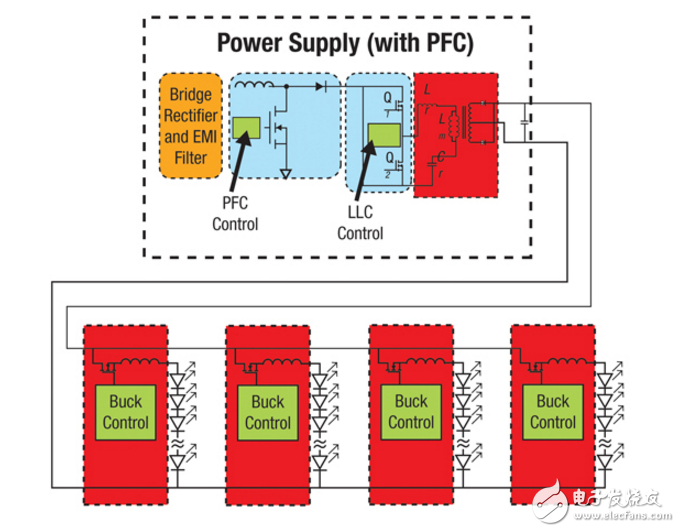
资料下载

驱动发光二极管-模拟和数字拓扑之间的选择
驱动发光二极管-模拟和数字拓扑之间的选择
模拟或数字驱动器之间的选择取决于应用程序的要求。无论您选择哪条路线,您都只是通过了许多决策点的第一步。
LED不再是控制台或圣诞装饰品上简单的指示灯,LED正在完全改变照明行业。效率高,成本低,使用寿命长,继续取代现有的照明技术。此外,用于LED开发的硅和设计工具使得在所有行业的应用程序中充分利用这些设备成为可能。
对这项技术最新的工程师们的挑战是LED是由相当复杂的模拟系统驱动的。系统可以基于电流或电压,并且在负载、颜色变化和字符串长度之间保持高级一致性和效率。更复杂的设计是一个事实,即LED从不同的生产运行变化很大,足以要求校准一些应用程序。

There are also many approaches for implementing LED technology, varying from very simple analog driver circuitry for light bulb replacement, to advanced digital MCU-based systems for stage or street lighting, requiring adaptive compensation and remote control through a wired or wireless communications link. Which implementation is optimal, however, depends upon many factors. This article will look at some of the more important elements of an LED-based design and their impact on cost, power efficiency, and design simplicity.
Analog versus digital
A basic LED system takes an AC or DC input and converts it to an appropriate DC voltage or current to drive the LED (see Figure 1)。 One of the most common applications utilizing a pure analog topology is light bulb replacement, where the LED system needs to be as simple as the product it is replacing. For such an application, advanced features such as a communications link or internal intelligence are unnecessary, making an analog approach ideal.
声明:本文内容及配图由入驻作者撰写或者入驻合作网站授权转载。文章观点仅代表作者本人,不代表电子发烧友网立场。文章及其配图仅供工程师学习之用,如有内容侵权或者其他违规问题,请联系本站处理。 举报投诉
- 相关下载
- 相关文章






